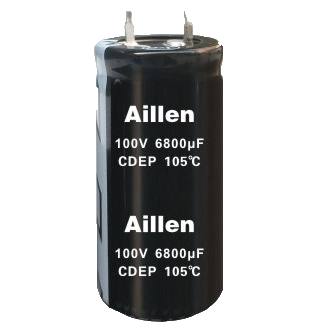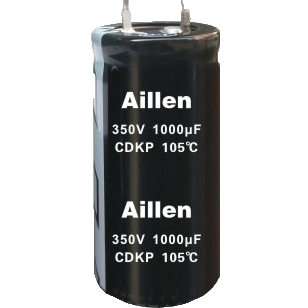Home >> Products >> Capacitors >> Snap-in aluminum electrolytic capacitors >> High Reliable/ Long Life Aluminum Electrolytic Capacitors
| image | Series | Features | Description | catalog | Specification | RoHS | REACH | Part No. | Application |
|---|---|---|---|---|---|---|---|---|---|
|
|
CDKP | High reliable capacitors that withstand under ripple high current. | CSE229M1VHKPQ40SZ1 | Application Guide | |||||

|
CDEP | Lug / Snap-in Terminal Type, Long Life Assurance |
|
CDEP | Application Guide | ||||

|
CDKP | Hight reliable capacitors that withstand under ripple high current. |
|
CPKP | Application Guide |
Lifetime of Aluminum Electrolytic Capacitors
The lifetime of aluminum electrolytic capacitors depends on several factors, including the operating conditions, quality of the materials used in manufacturing, and design of the capacitor.
Generally, aluminum electrolytic capacitors have a rated lifetime that is specified by the manufacturer, typically in units of hours. The rated lifetime is an estimation of the expected useful life of the capacitor under specific operating conditions.
The rated lifetime is based on several factors, including the applied voltage, ambient temperature, and ripple current. For example, a capacitor with a rated lifetime of 5000 hours at 105°C may have a lifetime of 10,000 hours at 85°C or 20,000 hours at 65°C.
In addition to the rated lifetime, the actual lifetime of a capacitor can be influenced by factors such as mechanical stress, humidity, and the presence of contaminants. Over time, the electrolyte in the capacitor can evaporate or break down, causing the capacitance to decrease, and the equivalent series resistance (ESR) to increase.
When the ESR of the capacitor exceeds a certain threshold, it can cause the capacitor to overheat and potentially fail. For this reason, it is essential to select capacitors that are rated for the specific operating conditions and to monitor the ESR periodically to ensure the capacitor's continued operation.
Aluminum electrolytic capacitor Reliability
The reliability of aluminum electrolytic capacitors can be affected by several factors, including:
Temperature: High temperatures can accelerate the aging of the electrolyte in the capacitor and cause the capacitance to decrease and the equivalent series resistance (ESR) to increase. This can lead to the capacitor overheating and potentially failing.
Voltage: Excessive voltage can cause the dielectric material to break down and short-circuit the capacitor. This can result in a catastrophic failure, including the release of gas and electrolyte, and the potential for fire or explosion.
Ripple current: Ripple current is the AC component of the current that flows through the capacitor. Excessive ripple current can cause the capacitor to overheat, which can lead to failure.
Mechanical stress: Mechanical stress, such as vibration or shock, can cause the lead wires or internal connections of the capacitor to fracture, leading to a loss of capacitance or an open circuit.
Humidity and Contamination: Moisture and contamination can corrode the aluminum foil, causing the capacitor's ESR to increase and potentially leading to failure.
To improve the reliability of aluminum electrolytic capacitors, manufacturers use high-quality materials, implement strict quality control processes, and subject the capacitors to rigorous testing, including temperature cycling, life testing, and high-voltage testing.
In addition, designers can use techniques such as voltage derating, selecting capacitors with a higher voltage rating than required, and designing circuits that minimize ripple current to improve the reliability of the capacitors.
Read More